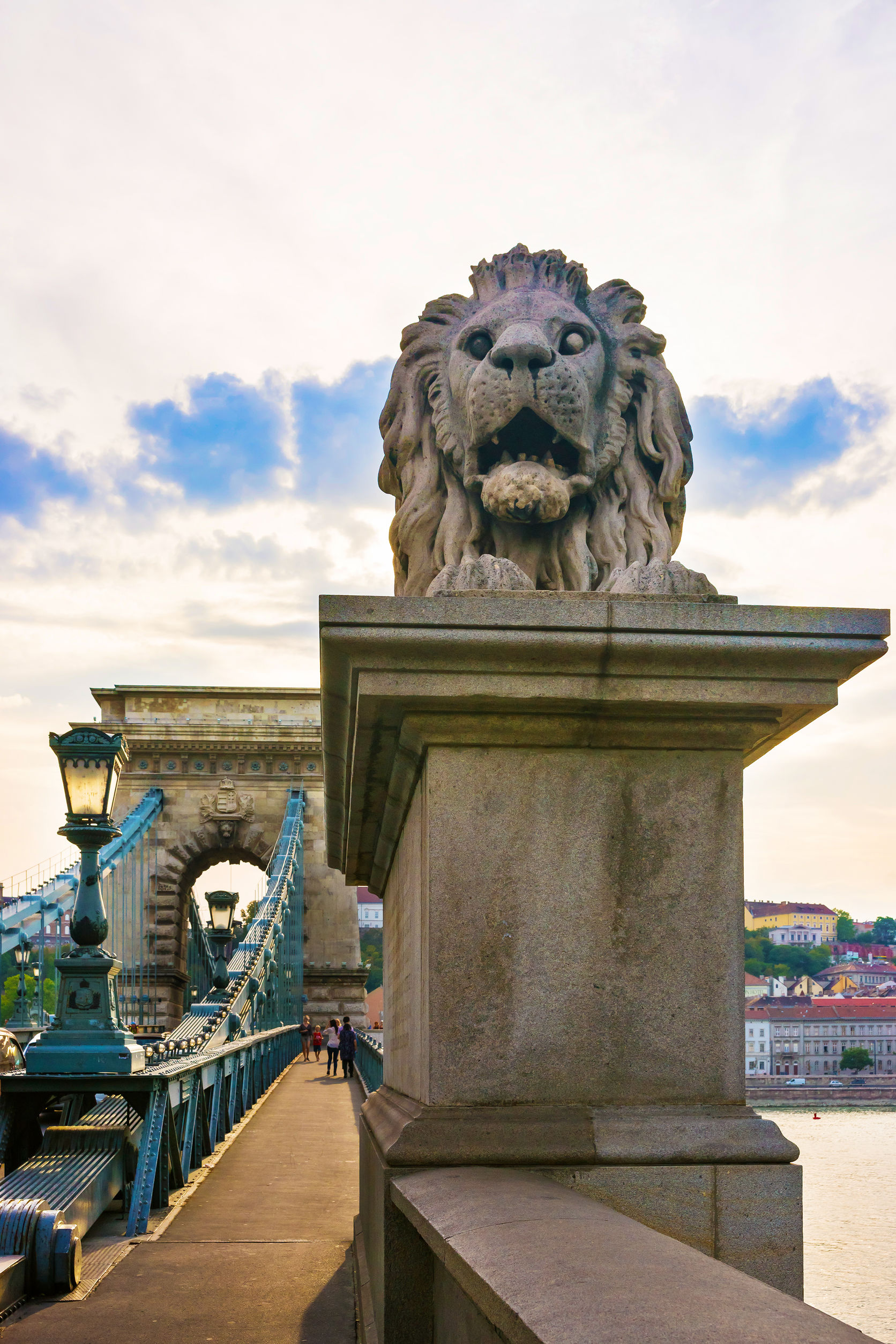
There’s an urban legend that has been around on the Buda and Pest side. According to this legend the lions of the Chain Bridge don’t have tongues, and the sculptor felt so deeply ashamed that he committed suicide. Now, as the Széchenyi Chain Bridge is planned to be closed down for years due to renovations starting in 2019-2020, the old rumor is spreading again. One day, during my daily stroll I also saw someone looking around at the bridge trying to peek in the mouth of the lion.
The Adventurous Story of the Chain Bridge
The story of the Chain Bridge is adventurous in itself as the Austrians wanted to destroy it during the Hungarian Revolution of 1848-49, and although at that point the bridge luckily wasn’t blown up, although in 1945, during the siege of Budapest, the Germans carried out the action. It was exciting to discover that the bridge had several siblings and doppelgangers in Europe, as I already shared in my previous post. I would not burden you with repeating the story of the Chain Bridge here, I just want to focus on the lions.
The Legends of the Chain Bridge
According to one version of the legend in Budapest the lions were placed before the official inauguration of the bridge: one sculpture on each of the four abutments created by János Marschalkó. During the ceremony a cobbler's apprentice noticed that something is wrong with the sculptures and shouted: “These lions are worthless, they don’t have tongues!” In a different version the apprentice said that the lions were worth less than a cat because their tongues were missing. News spread among the crowd like wildfire, people were laughing and the sculptor who attended the ceremony felt so ashamed that he threw himself into the Danube right away.

According to another version of the story the lions were placed on the bridge in 1852. When Jakab Frick, a shoemaker apprentice, noticed that they don’t have tongues, he bursted out and the sculptor killed himself in misery.
Legend has it that János Marschalkó was the first person tocommit suicide on the Chain Bridge, thus inaugurating it. For you should know that according to an old superstition, bridges are in fact inaugurated by suicides – János Arany wrote a ballad on this topic, called Bridge Inauguration (Híd-avatás).
The Truth Behind the Legend
What happened in reality? It is true that rumors about the lions not having tongues started to spread, and people believed that the sculptor had made a great mistake. Allegedly, news spread in Pest very quickly, the whole city went on about it and János Marschalkó became the target of neverending jokes.
One day, however, he was fed up with the mockery and according to an article of the Pesti Napló (in 1897), Marschalkó stated: “I bet you 500 Forints that when a real lion holds his mouth the way my stone lions do, his tongue cannot be visible, as it sits deep.” They went to a circus, checked it, and as the sculptor was right he got his 500 Forints, which he then gave away for charity.

A paper wrote about the story in 1941 as follows:
Whereas the truth is that János Marschalkó, who carved the lions, is one of our fine sculptors born in Lőcse, and besides the four lions of the Chain Bridge, a considerable amount of the sculptures decorating the Academy of Sciences, the Vigadó of Pest, the Rudas Thermal Bath, and a few other public buildings in Pest and other parts of the country, are his works. He lived for many years after the inauguration of the Chain Bridge in good health and only passed away in 1877 at the age of 58. That is, he had no means to commit suicide, for which he would not have had any reason because the lions of the Chain Bridge do have tongues, they just simply do not stick them out. Marschalkó himself always had a good laugh at this urban legend of Pest, and he used to simply add:
“I am not a butcher, to loll out big tongues for smoking...” Thus we have settled this rumor, or rather the late Béla Tóth. The only question left to ask is, where could this simple-minded anecdote come from?
It turned out that – as any proper anecdote – comes from the old Austria, people of the nature of wayfarers.In a small village called Kulm, which can be found at the foot of the Czechish Ore Mountains, a large monument was erected to commemorate the battle that had taken place on August 30th, 1813 between Napoleon’s army and the joint Austrian, Prussian and Russian forces, and had resulted in the victory of the latter. The obelisk, placed in the middle of the plain, was made by an Austrian sculptor, Peter von Nobile (1774-1854), who created among others the huge Doric three-bayed Burgtor, the triumphal arch in Vienna.
The monument of Kulm was revealed in 1837 and contemporary critics immediately criticized the walk of the four lions on the base. As it turned out, the walk of these animals is quite unnatural: they move both of their right legs at the same time – their fore and hind legs –, which, in reality, would result in these exquisite beasts falling on their sides. During the revealing ceremony, however, a child noticed some other mistakes: these animals indeed have no tongues...







